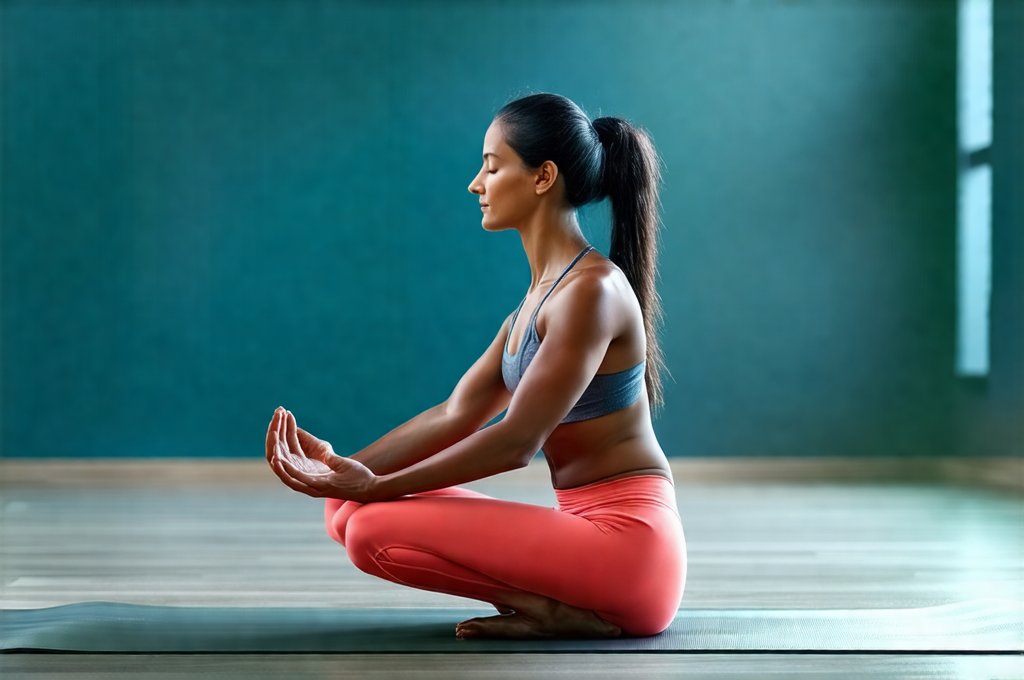Pelvic tension is an incredibly common experience, affecting people across all demographics and walks of life. Often stemming from stress, physical exertion, childbirth, postural imbalances, or even simply prolonged sitting, this tension can manifest in a variety of ways – lower back pain, hip tightness, digestive issues, urinary frequency, and discomfort during intimacy are just a few examples. Many individuals unknowingly carry chronic tension in their pelvic floor muscles, leading to ongoing discomfort and impacting their overall quality of life. Recognizing the connection between physical practices like yoga and alleviating this tension is becoming increasingly popular as people seek holistic approaches to wellbeing.
The beauty of yoga lies in its ability to address both the physical and mental components contributing to muscle tightness. Unlike isolated stretching, a well-rounded yoga practice encourages mindful movement, breathwork, and body awareness – all vital elements in releasing deeply held tension patterns. While numerous poses can contribute to pelvic health, certain asanas are particularly effective at gently opening the hips, strengthening the core (which supports the pelvis), and calming the nervous system, thereby reducing overall pelvic tension. It’s important to note that a cautious and individualized approach is crucial; what feels restorative for one person may exacerbate discomfort for another, especially if there’s an underlying medical condition.
Understanding the Pelvic Floor & Tension Release
The pelvic floor is a group of muscles that span the bottom of the pelvis, supporting organs like the bladder, uterus (in individuals with a uterus), and bowel. It’s responsible for crucial functions – continence, sexual function, and core stability. When these muscles are overly tight or weak, it disrupts these functions and contributes to pelvic tension. Tension can arise from various factors: repetitive strain from lifting, childbirth trauma, chronic stress causing habitual clenching, or even improper breathing patterns. The goal isn’t necessarily to tighten the pelvic floor (as often suggested in early postpartum care) but rather to restore its natural tone and range of motion – allowing it to function optimally. Yoga offers a nuanced approach to achieving this balance.
A key component is learning to connect with your breath. Diaphragmatic breathing – deep, belly-based breaths – encourages the pelvic floor muscles to gently release on exhale. This is in contrast to shallow chest breathing which can inadvertently tighten the area. Furthermore, gentle movements that encourage circulation and tissue hydration are essential. Static stretching alone often isn’t enough; dynamic movement helps ‘wake up’ the tissues and allows for greater flexibility without forcing or straining. It’s also vital to remember that tension in the pelvis is rarely isolated – it’s often connected to tension higher up (in the hips, lower back) and even in the shoulders and neck. If you are experiencing chronic pelvic pain, exploring strengthen the bladder wall may be helpful.
Yoga Poses for Pelvic Tension Relief
Several yoga poses are particularly beneficial for relieving pelvic tension. Supta Baddha Konasana (Reclined Bound Angle Pose) is a fantastic starting point. Supported with bolsters or pillows under the knees, it gently opens the hips and allows the inner thighs to release, which can significantly alleviate tension in the pelvic region. Similarly, Balasana (Child’s Pose), especially when modified with a bolster between the thighs, offers a calming and restorative space for the pelvis to soften. Gentle hip openers like Eka Pada Rajakapotasana (Pigeon Pose) – practiced cautiously and with modifications if needed – can also release deep-seated tension in the hips and surrounding muscles, indirectly impacting pelvic health.
However, it’s important to avoid poses that overly compress the pelvis or put excessive strain on the pelvic floor. Deep forward folds without adequate spinal support can sometimes exacerbate discomfort. Similarly, intense hip openers performed without proper alignment can place undue stress on the sacroiliac joint. Listening to your body and modifying poses as needed is paramount. A qualified yoga instructor experienced in working with pelvic health concerns can provide personalized guidance and ensure you’re practicing safely and effectively. Remember that consistency is key – regular gentle practice is far more beneficial than infrequent intense sessions.
Gentle Hip Openers & Their Benefits
Hip openers are often the first line of defense when addressing pelvic tension, as tightness in the hips directly impacts pelvic mobility and function. – Supta Kapotasana (Reclined Pigeon) offers a gentler alternative to traditional pigeon pose, allowing for a deeper stretch without putting excessive weight on the lower back. It’s best performed with a strap around the thigh to assist with the opening.
– Ananda Balasana (Happy Baby Pose) is another excellent option. This pose gently massages the sacrum and releases tension in the hips and lower back. Avoid pulling too aggressively on the feet; focus on keeping the lower back flat on the floor.
– Baddha Konasana (Bound Angle Pose) performed seated or reclined, can similarly ease hip tightness.
These poses don’t just physically release tension; they also encourage a sense of letting go and surrendering – promoting relaxation and reducing stress, which are significant contributors to pelvic tension. The key is to approach these postures with mindfulness, focusing on the sensations in your body and adjusting as needed. When experiencing pelvic pain, it’s important to understand if medications can help alleviate symptoms.
Incorporating Breathwork & Mindfulness
Breathwork plays an integral role in releasing pelvic tension because it directly impacts the nervous system and the pelvic floor muscles. Ujjayi breath (oceanic breath), a common practice in yoga, encourages slow, deep breaths that calm the mind and soothe the nervous system. This can help to reduce stress hormones like cortisol which contribute to muscle tightness. – Diaphragmatic breathing exercises, focusing on expanding the belly with each inhale and contracting it with each exhale, specifically target the pelvic floor muscles, encouraging them to release on the exhale.
– Practicing mindful awareness of your pelvic floor during poses (without actively clenching or tightening) can deepen your connection to these muscles and help you identify areas of tension.
Mindfulness extends beyond breathwork; it’s about cultivating a non-judgmental awareness of your body’s sensations. This allows you to recognize when you’re holding tension and gently release it, rather than pushing yourself into discomfort. Combining mindful movement with conscious breathing creates a powerful synergy that can significantly alleviate pelvic tension. If pain is interfering with daily life, consider if stream strength can be improved.
Modifying Poses for Individual Needs
It’s crucial to remember that yoga is not one-size-fits-all. Individuals experiencing pelvic pain or dysfunction may need to modify poses to avoid exacerbating their symptoms. – Using props like bolsters, blankets, and blocks can provide support and reduce strain on the pelvis. For example, placing a bolster under the sacrum during Supta Baddha Konasana offers greater comfort and allows for deeper relaxation.
– Avoiding deep forward folds or intense hip openers if they cause pain is essential. Instead, focus on gentler variations that promote opening without strain.
– If you have any underlying medical conditions (such as endometriosis, fibroids, or pelvic organ prolapse), it’s imperative to consult with a healthcare professional and a qualified yoga instructor before starting a practice. A personalized approach tailored to your specific needs will ensure safety and effectiveness. For post surgical recovery, exploring if catheter use can be reduced may ease discomfort.
Ultimately, the goal isn’t to achieve perfect alignment in poses but rather to cultivate body awareness, release tension, and restore function – all within a comfortable and safe range of motion.





















